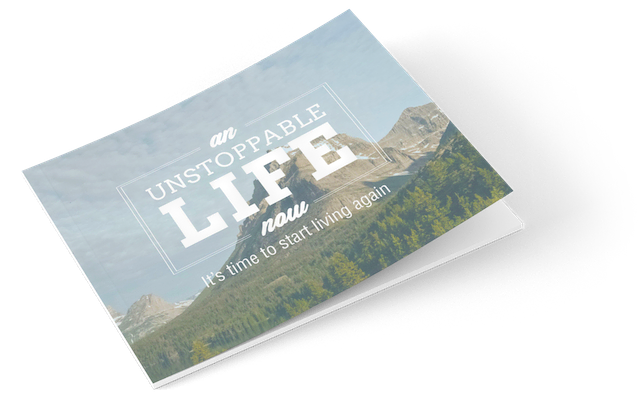(Need to put video thumbnail as the Featured Image.)
We’re all working to build resilience and to uncover the obstacles that are holding us back from our success, our happiness, and our health. So I hope that you take away some really key points here today from the resilience building that we’re going to do. Grab a notebook or something to jot notes on…
I’m a success, leadership and life coach and all of my work is based in resilience and positive psychology. I wanted to take this opportunity to help you feel more unstoppable. We’re all working to build resilience and to uncover the obstacles that are holding us back from our success, our happiness and our health. So I hope that you take away some really key points here today from the resilience building that we’re going to do. Grab a notebook, or something to jot notes on.
When we talk about resilience, what we’re really talking about is the ability to bounce back. Not just bouncing back to where you were when you started. But to bounce back, having grown and added additional resources to your life. Resilience is really about putting yourself in a growth mindset. It’s a way to really understand what is going on in the moment and then pay attention to what actions you want to take next.
We have a couple of ways that we can hack our system and the system is us. I’ll cover three really easy ways to hack your own system into being more resilient, the first is in your thinking. We can always hack the system one of three ways; we can change our thoughts, change our emotions, or change what we do physically. I’m going to start with the hardest and end up with the easiest.
The hardest is to change your thinking, because so many things around us every day really influence how we think about what’s going on, what our place is or what opportunities we have or don’t have. When we start to look at the thought patterns, that’s where we have an opportunity to really make productive and deep change, but it’s going to take a little while. So that’s why I want to give that one to you first.
Let’s talk about this word responsibility. I want you to pull that word apart into response and ability. When we look at the response part, we as human beings have the ability to respond 100% of the time to 100% of the things that are happening. We are responding to the air we breathe, the sunshine or the birds singing. (Right now I’m responding to my dog in the corner, who’s snoring).
We can’t help responding all the time to everything, whether there’s an outward sign that we’ve responded, like, “Oh, I was startled”, or “Wow, that made me really happy”. Or if it’s an inward response to breath, or heartbeat, or our liver functioning. Generally we don’t really pay attention to how the concrete feels under our feet, but we’re still responding to it. So that’s response. Next is action, which is the ability to take action.
We have 100% ability to respond 100% of the time, but we don’t always have 100% ability to take action. Start by understanding that you have a choice about what action you want to take, given what’s going on in any situation. When you can create a space between the response you’re having, and any number of possible actions you could take.
Let’s say Something goes awry in your business. You could freak out, go hide in bed, and not deal with any of it and that’s not really going to get you very far. You could start sending a million emails to everybody and not get a lot for the effort you’re putting in, but you’d feel like you were doing a lot. In this situation the best thing you can do is separate response and ability in order to take considered action. Start by taking a moment (or 5 or 10) to really look at what’s the action you want to take, that’s going to get you the feeling or move you closer to the goal you want. This is how taking action is the key part of responding.
So you have this response and then you sit and take a couple breaths, or look out at the sky or twiddle your thumbs. Whatever it takes to get you to stop for a minute, and really see what’s going on.
Then ask yourself, What’s the most interesting and productive thing I can do right now that will get me the outcome I want? For instance, Christina had this wonderful idea of pulling together all of these amazing people for this week-long workshop. So she’s aiming us all towards a response that is helpful, compassionate, and inclusive. She took what was going on in the world, how she was responding to it, and then led us to this place where we get to choose what actions we want to take. So there’s response and ability. So that’s number one.
Number two, is a breathing technique that will help you in that pause between responding and taking action. It’s also going to trigger your parasympathetic nervous system and that means your whole nervous system calms down. When your whole system calms down, and you’re breathing easier, then your brain gets enough oxygen to function properly. When you’re thinking more clearly you have an opportunity to decide what action you should take, or maybe take no action.
Keep listening for all 3 simple practices to help you build your resilience.

